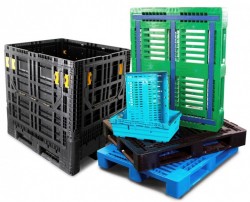
Say you want to curb your energy use, both to trim your monthly bills and to reduce your impact on the environment. Your kitchen, packed with appliances, is a good place to start making those savings. According to data from the Energy Savings Trust, cold appliances (that’s refrigerators and freezers) account for 16.2% of household’s electricity consumption. Wet appliances (dishwashers and washing machines) consume 13.6% of your total electricity budget, on average, and cooking has a 13.8% share of the pie (although this will be lower if you cook with gas, and your gas consumption will be higher).
Maybe you have a new smart meter that allows you track your energy use in real time, possibly from your smartphone. You’ve been consulting the data to see where you can notch energy savings, either by running certain appliances less often or by upgrading to more efficient models. And while you can use smart meters to roughly determine how much energy your appliances are sucking—does your use shoot up when you run your dishwasher and is laundry day particularly energy intensive?—it may be hard to determine which is the greediest machine in your kitchen.
Helpfully, every electrical device will have a power rating, represented in watts (W) or kilowatts (kW), that tells you how much electricity it needs to run. But the power rating, or wattage, of an appliance doesn’t tell the whole story. Energy consumption is also measured in time and represented as kilowatt hours (kWh)—that’s the unit you’re charged for by your supplier. In the UK, each kWh of electricity costs approximately 12.5p.
Factor in time and a low wattage appliance like a fridge can end up being the hungriest of your white goods simply because it has to stay on all the time to keep food fresh. If you like a bit of back of the napkin maths, you can calculate yourself how much energy your appliances are using, in kWh and pounds and pence.
Say you have a 150 watt fridge (100-200 watts is standard for domestic fridges) and, as fridges should, it runs 24 hours a day. It’s using 3.6 kWh of energy a day and costing you 43.2p. Check the maths below:
150W = 0.15kW
0.15 kW x 24 hours = 3.6 kWh
3.6 kWh * 12.5 p/kHW = 43.2p
Multiply the kWh and pence by a year, and you can see your fridge is gobbling up 1,314 kWH of electricity a year and costing you £157.68. That’s not quite eating you out of house and home, but it’s close.
It’s easy to calculate the consumption of your fridge—that thing cannot and should not be turned off—but do you really know how long your dishwasher is running every day? What about all the times it’s on but in standby because you failed to power it down? The following baselines can show you the typical energy consumption of standard household appliances. Of course, efficiency varies dramatically between models and has been improving in the last few years. Older model appliances may be significantly more energy-hungry, and some appliances are specifically designed and marketed as low-energy.
- Electric cooker: Electric cookers use about 15 kWh of electricity to cook meals for a family of four over a week. That’s about £1.88 per week.
- Washing machine: Washing machines use around 2.5 kWh of electricity to run an hour-long wash, costing you about 30p. So make sure you’re running full loads, not just a few stray whites and brights.
- Tumble drier: A run with a standard-sized load will use 2.5 kWH, costing you about 30p. Run it three times a week and you’ll be using 390 kWH per year and spending £48.75. Time to invest in a drying rack?
- Dishwasher: A dishwasher run at 65C will use 1.44 kWh per cycle, costing you 18p. Run it three times a week and you’re facing an annual cost of nearly £28. But if you turn down the temperature to 55C, it consumes just 1.07 kWH per run, costing you 13.4p and just £21 a year.
- Microwave oven: Microwave ovens use about 1 kWh per use, so you should be mentally adding 12.5p to the cost of every ready meal.
- Kettle: Electric kettles use 0.11 kWH to heat 1 litre of water, costing you 1.4p. A small price to pay for tea and comfort, so you won’t have to start charging your guests for their cuppa.
Appliances on standby: Even if an appliances is using just 5 watts to be on standby—turned on but not in use—if you leave it on for the whole day, it burns through 0.12 kWH. Reliably forget to turn it off—say it’s on and idling half the time—and you’d burn 21.9 kWH a year and spend £2.75. And that’s just one appliance. Forget to turn off several of them and the costs, in energy and in pounds, can start adding up.





Leave a Comment